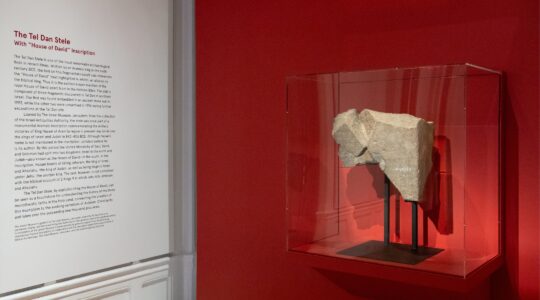Good weather, it turns out, is a relative concept.
When the sun comes out over Santorini, nobody pays any attention. It’s a fact of life, like seagulls and tourists.
But watching the sun come out over the Wadden Sea Islands — an archipelago off the Dutch coast — is like watching a miracle unfold.
Temperamental opposites of their Mediterranean-loving counterparts, aficionados of the bleak, chilly North Sea find their poetry in moody skies, in endless shades of gray, and in the subtle wonders of a cold and muddy landscape. This is the New England of Europe — a land of variable weather and even more variable seas.
Mud can itself be an attraction: Just ask any of the hundreds of hardy souls who, every year, explore the straits that connect the Frisian Islands by signing up for guided mud-walking tours, across the straits that connect these so-called Frisian Islands, an activity known locally as “wadlopen.” In a land whose tidal rhythms are so dramatic and unique that they have been declared a UNESCO World Heritage Site, the wade through waist-high muck — teeming with algae, rare bird species and the odd seal — attracts a certain moisture-resistant type of nature-lover to this stretch of the North Sea.
Largely unknown to Americans, the Frisian Islands are extremely popular with the Dutch, who regard them as a national nature preserve and a favorite family resort. They lie directly north from OF Amsterdam, just off the mainland port town of Denhelder. Along with Harlingen, this is where you’d catch a ferry to begin your exploration.
There are actually dozens of islands. Most are tiny and uninhabited, but the five major keys are, in order of their proximity to the mainland, Texel, Vlieland, Terschelling, Ameland and — just try to say it — Schiermonnikoog.
August and September are peak season in the Wadden Sea, whose beaches are sandy and inviting with calm, clear waters and schools of shiny fish. Blessed by the jet stream, the North Sea is on the same latitude as Newfoundland but enjoys relatively warm weather during these lengthy, late-summer days.
It’s a time of year when families flock to the beaches of Schiermonnikoogb — the tiniest island, yet it boasts the widest sandy stretch in all of Europe — and to music festivals like “Into the Great Wide Open,” held during the first week of September on Vlieland.
The closer islands in particular are surprisingly spread out; winding roads and bike trails curve through miles and miles of virgin forest, dotted with picturesque, wooden-house villages and antique lighthouses. Along the shoreline, the dunes can reach magnificent heights — especially on Vlieland, where the sandy peaks soar to over 100 feet.
Most visitors spend a week or so hopping between islands, and it’s easy to do — even if mud-walking isn’t really your thing. The ever-organized Dutch have a peerless system of public transport, with fast ferries zipping between the mainland and the islands in less than an hour. Fares are generally $10-$30.
Throughout this terrain, you’ll find mud flats, cranberry bogs — cranberries are considered the local specialty, along with an alcoholic firewater known as nobeltje — and nature reserves with abundant wildlife, with birdwatching and horseback riding especially popular.
Support the New York Jewish Week
Our nonprofit newsroom depends on readers like you. Make a donation now to support independent Jewish journalism in New York.
Each island has its particular draws. Texel, where thousands of sheep roam, has something for all ages; its museums, with exhibits on underwater-life beachcombing, keep youngsters occupied on soggy days. Nobody will ever mistake this for Mykonos, but a string of old-time pubs and a beer brewery attract summer crowds of Dutch university students, often with live music.
Ameland, a onetime whaling port, remains the heart of Frisian Sea fishing culture. Today’s trawlers are more likely after mackerel than humpbacks, but the maritime spirit remains palpable in Ameland’s quaint, cobblestoned villages. This is where you can catch a boat tour to scope out seal habitats, join a day fishing expedition, or simply scale the dunes, looking for signs of seals.
Terschelling is the artsy island. Nautical scenes in oil and watercolor fill its airy galleries, where patrons browse before heading to upscale restaurants that make the most of local ingredients: honey, wild berries and fresh-caught fish. Artisanal cheese-making is a storied art in the traditional Frisian farmhouses; several offer guided tours and tastings.
All these wild marshes and unspoiled woods make for an avian paradise, and the Frisian Islands positively teem with bird life. Beginning at dawn, avid birders watch the skies for the graceful swoops of northern gulls, listen for the cries of seabirds and the rustle of puffins, and traipse through marshes for a glimpse of rare ducks. Terschelling, in particular, is famed for its bird colonies — as well as its butterfly groves — but it’s tiny Schiermonnikoog, with its boulder-pocked beaches and jagged dunes, that is home to a duck sanctuary.
There’s little here of religious interest, but few can deny the spiritual pull of this natural oasis. Here at Europe’s northern rim — where weather can turn on a dime, and clouds are a constant source of entertainment — the beach is only the beginning.
The New York Jewish Week brings you the stories behind the headlines, keeping you connected to Jewish life in New York. Help sustain the reporting you trust by donating today.




